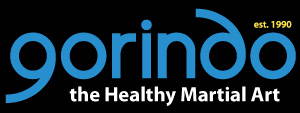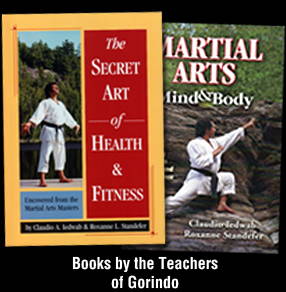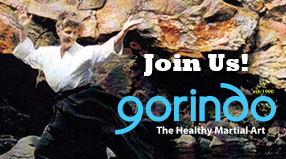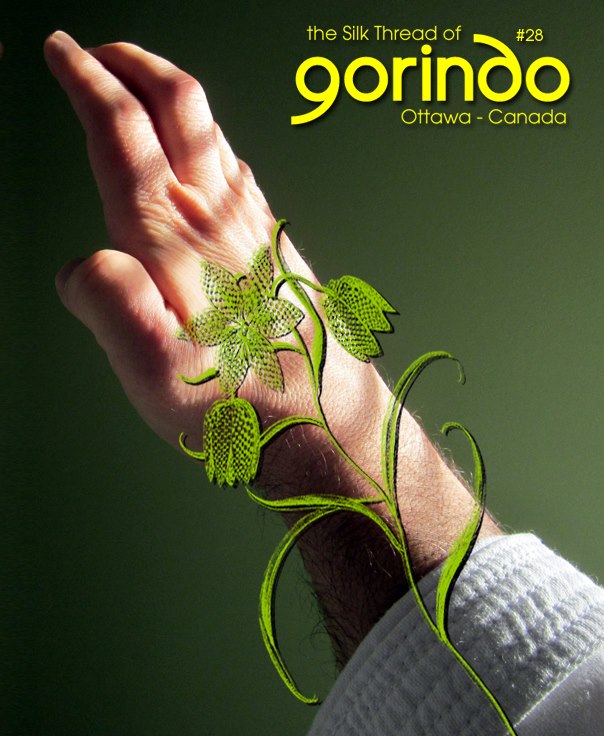
The Silk Thread of Gorindo - Ottawa - Canada
Issue 28
- The Process of Teaching (Part 3)
- Kihon - Basic Level Practice
Cover 'Sunny shuto' - Photo by ©2013 Claudio Iedwab
The Process of Teaching (Part 3)
< read Part 2 (previous issue)
The learning and the consequent acquisition of techniques will depend on the development and integrity of the neuromuscular system, the physical state of the individual and the conditions of the surroundings. After having learned something, mental or physical, practically 10% of that is forgotten immediately, and later only 60% of the initial material will be retained in the memory. 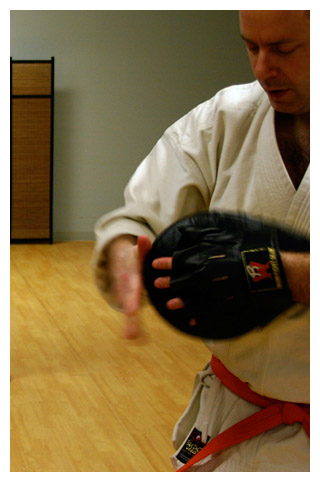
Initially, there is a fast phase of direct assimilation of new abilities, and after few lessons the execution sharpness will be of a 50-60% average.
Technical refinement will stop at 70-80% of the learned material, but continuity will provide small peaks of improvement in the performance. The final acquisition of the remaining 20-30% requires a high degree of dedication in the training, which is why the martial arts insist on perseverance and repetition of techniques in the endless quest for “the next will be better than the previous one”.
This may also lead to emotional states of frustration or boredom if the progress is not as evident as it was at the beginning of the learning.
The teacher, in this case, must create ways for the student to continue to be motivated and inspired during the practice without losing the line of progress that will naturally lead to the success of technical execution as a tool for personal development. Constancy and perseverance are the keys in this stage.
The acquisition of technical abilities is based on an improvement program that contemplates the progression in stages. Small steps will serve to maintain the focus on the next level, whatever the desired degree of complexity. This is the reason for the system of belts in the martial arts, it works complementarily with the education process, not as a way of rewarding the technical conquest but as an index of progress obtained or to be obtained.
Techniques of Education
The following methods act in the process of Martial Arts education.
• Trial and error are part of the teaching tools of personal accomplishment in the martial arts, but the teacher will have to avoid the risks that can jeopardize the student’s health and integrity, physical, mental or emotional.
• Direct reproduction of the demonstrated movements without previous mental elaboration.
• Technical refinement by way of general correction of basic errors, followed by specific correction of the movement.
• Establishment of patterns or models of execution and level of performance. In this case we see the value of the kata, and their traditions.
• Continuity in flexibility, resistance, strength, balance, etc. produce physical adaptations and development.
How does the student learn skills?
All educational program will contemplate the following objectives developed by the teacher in charge:
• Maintenance of the interest in the acquisition and exercising of technical elements and personal development.
• Avoiding an atmosphere of competitive attitude.
• Different use of approaches and didactic points of view.
• Emphasis on teaching how to learn.
• Learning on the part of the teacher, from the personal point of view and analytical interchange of experiences and knowledge with colleagues.
• Delivery of advice under an umbrella of positive and honest analysis.
• Improvement of the capacity of verbal and physical communication.
Whole Method
• In general it is desired to teach-learn the whole skill through repetition and practice.
• The instructor exercises the total skill in the best possible form in each one of the demonstrations.
• If one of the parts is weak, the student concentrates specifically on that part while continuing with the execution of the technique in his totality.
Part Whole Method
• A combination of distinct parts (where each one is a totality in itself) with some previous understanding of the parts.
Excerpt from the Course "Teaching Martial Arts - The Gorindo Way" by Claudio Iedwab & Roxanne Standefer
© 2013 Photo by Claudio Iedwab
Issue 28
- The Process of Teaching (Part 3)
- Kihon - Basic Level Practice
Cover 'Sunny shuto' - Photo by ©2013 Claudio Iedwab
« Click the Subscribe link on the left
